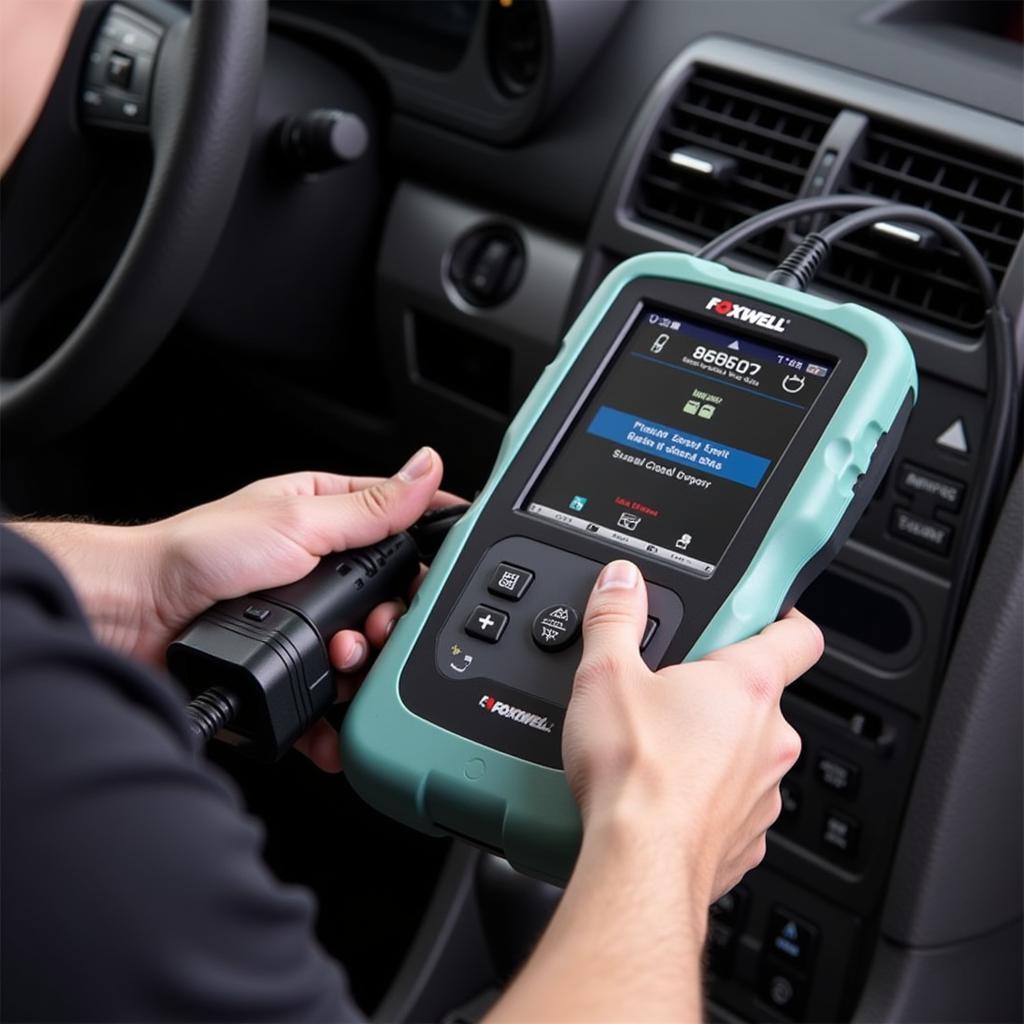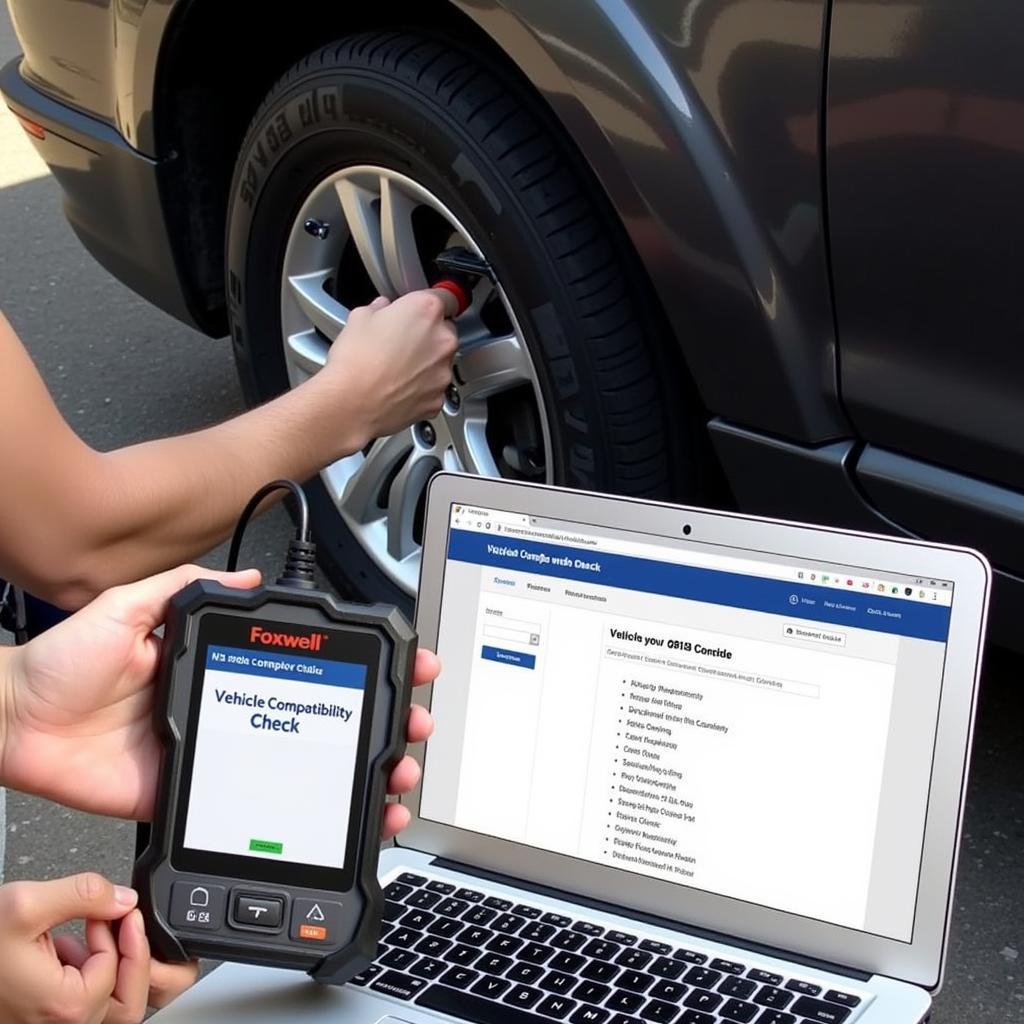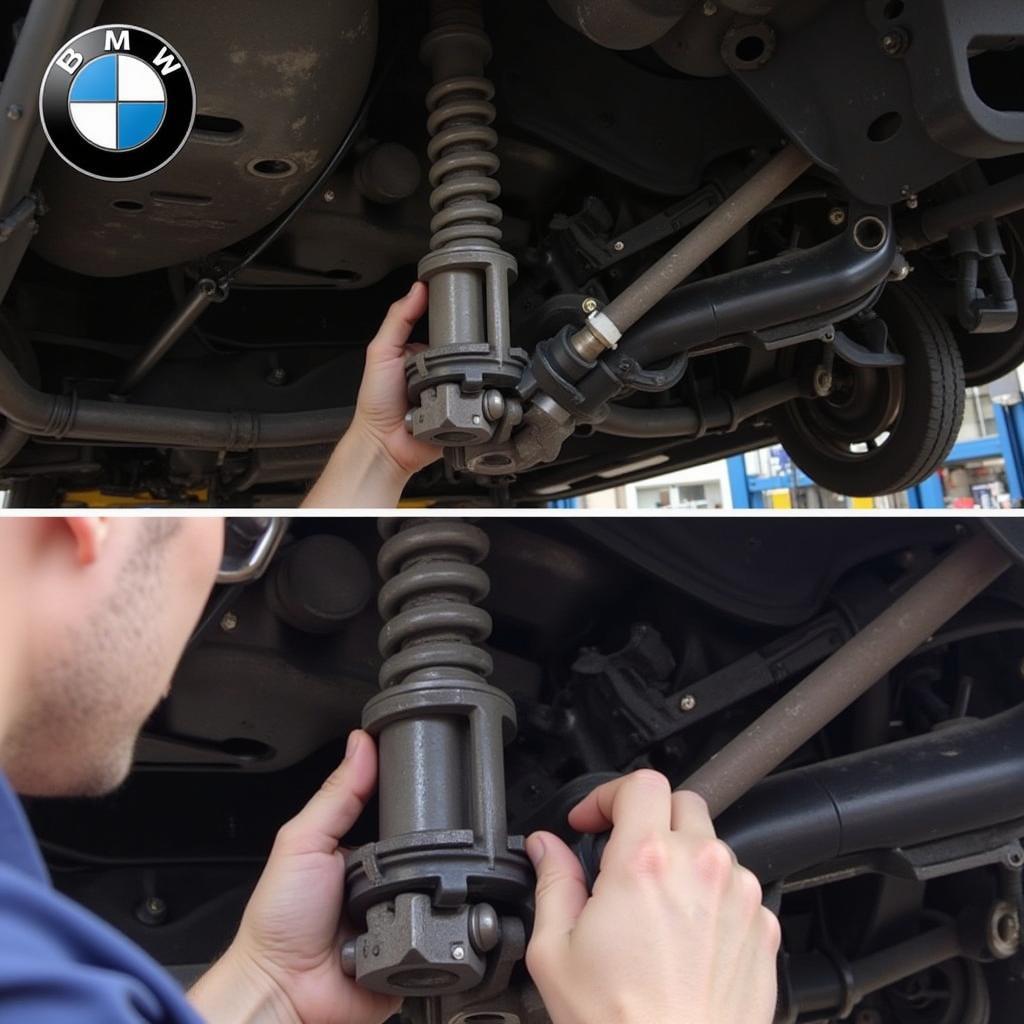Foxwell Mileage Correction, also known as odometer correction, is a process that allows you to adjust the displayed mileage on a vehicle’s odometer. Whether you’re a car owner, a mechanic, or an automotive technician, understanding the ins and outs of this procedure is crucial. This comprehensive guide will delve deep into the world of Foxwell mileage correction, providing you with valuable insights, practical tips, and expert advice.
Why is Foxwell Mileage Correction Needed?
There are several reasons why someone might need to perform a Foxwell mileage correction. These reasons can range from simple instrument cluster replacements to more complex electronic control unit (ECU) repairs.
Here are some of the most common scenarios:
- Instrument Cluster Replacement: When a faulty instrument cluster is replaced, the mileage reading from the old cluster might not transfer to the new one, requiring a correction.
- ECU Replacement or Repair: Similar to instrument clusters, replacing or repairing an ECU might also necessitate mileage adjustment.
- Aftermarket Instrument Cluster Installation: Installing an aftermarket instrument cluster often requires mileage programming to match the vehicle’s actual mileage.
- Tire Size Changes: Significant changes in tire size can affect the accuracy of the odometer, requiring a correction for accurate mileage readings.
- Mechanical Issues: In some cases, mechanical issues within the instrument cluster or speedometer cable can lead to inaccurate mileage recording.
Understanding the Legal Implications
Before delving into the technical aspects, it’s crucial to understand the legal implications surrounding Foxwell mileage correction. While the procedure itself might be legal for certain purposes, such as the scenarios mentioned above, using it to misrepresent a vehicle’s mileage for fraudulent purposes is strictly prohibited and carries severe penalties.
Always ensure that any mileage correction you perform is done legally and ethically, with proper documentation and justification.
Tools and Equipment for Foxwell Mileage Correction
To perform Foxwell mileage correction, you’ll need specific tools and equipment. While the exact requirements may vary depending on the vehicle’s make and model, here are some common tools:
- Foxwell Diagnostic Scanner: This is the primary tool used to communicate with the vehicle’s ECU and access the odometer settings. Foxwell offers a range of diagnostic scanners with varying capabilities.
- Software and Drivers: You’ll need compatible software and drivers installed on a laptop or computer to interface with the Foxwell scanner.
- OBD-II Cable: An OBD-II cable connects the scanner to the vehicle’s diagnostic port, enabling communication between the devices.
- Vehicle-Specific Information: Access to vehicle-specific information, such as wiring diagrams, pinouts, and ECU data, is essential for successful mileage correction.
Choosing the Right Foxwell Scanner
Foxwell offers a diverse lineup of diagnostic scanners, each tailored to specific needs and budgets. Choosing the right scanner for mileage correction depends on the vehicles you work on and your budget. Consider these factors:
- Vehicle Coverage: Ensure that the scanner supports the make, model, and year range of the vehicles you intend to work on.
- Functionality: Look for scanners that explicitly offer odometer correction or mileage adjustment capabilities.
- Software Updates: Opt for scanners that provide regular software updates to stay current with the latest vehicle models and protocols.
- User Interface: A user-friendly interface with intuitive menus and clear instructions can significantly simplify the correction process.
“Investing in a high-quality Foxwell scanner is crucial for any professional looking to provide reliable and accurate mileage correction services,” says John Miller, a veteran automotive electrician with over 20 years of experience. “The right scanner can save you time, effort, and potential headaches down the road.”
The Foxwell Mileage Correction Process
The actual process of performing Foxwell mileage correction can vary significantly depending on the vehicle’s make, model, and year. However, the general steps involved are as follows:
- Vehicle Identification: Accurately identify the vehicle’s make, model, year, and engine type.
- Connect the Scanner: Connect the Foxwell scanner to the vehicle’s OBD-II port using the OBD-II cable.
- Establish Communication: Turn on the vehicle’s ignition and launch the Foxwell software on your laptop or computer. Establish communication between the scanner and the vehicle’s ECU.
- Access Odometer Settings: Navigate through the software menus to locate the odometer correction or mileage adjustment function.
- Enter New Mileage: Carefully enter the new mileage value that you want to set on the odometer.
- Confirm and Execute: Double-check the entered mileage value and confirm the correction. The scanner will communicate with the ECU to adjust the mileage.
- Verify Correction: Once the process is complete, verify that the odometer displays the corrected mileage.
Common Challenges and Troubleshooting Tips
While Foxwell mileage correction can be a straightforward process, you might encounter some challenges along the way. Here are some common issues and troubleshooting tips:
- Communication Errors: Ensure that the scanner is properly connected to the vehicle’s OBD-II port and that the ignition is turned on. Verify that you’re using the correct software and drivers for your scanner model.
- Unsupported Vehicles: Not all Foxwell scanners support all vehicle makes and models. Double-check the scanner’s vehicle coverage list before attempting the correction.
- Software Issues: Outdated or corrupted software can lead to errors. Ensure that your Foxwell software is up to date.
- Incorrect Mileage Input: Double-check the entered mileage value before confirming the correction. An incorrect value can result in an inaccurate odometer reading.
If you encounter persistent issues, consult the Foxwell user manual or reach out to their customer support for assistance.
Conclusion
Foxwell mileage correction is a valuable procedure with legitimate applications in various automotive scenarios. By understanding the legal implications, acquiring the right tools, and following the correct procedures, you can perform mileage corrections accurately and confidently. However, always prioritize ethical practices and comply with all relevant regulations to avoid legal repercussions.
For all your Foxwell diagnostic needs and expert assistance, contact ScanToolUS at +1 (641) 206-8880 or visit our office at 1615 S Laramie Ave, Cicero, IL 60804, USA. We are dedicated to providing top-notch tools and support to automotive professionals and enthusiasts.



